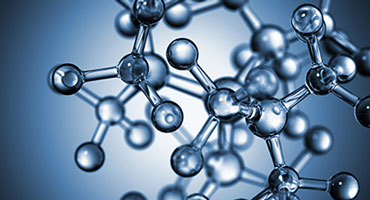Sustainable synthesis and catalysis
Main group catalysis
 Catalysts allow us to control the products that form in a chemical reaction, but are unchanged in the overall process. The field of catalysis has transformed our lives by providing methods to generate essential molecules such as medicines, fuels, fertilizers, and materials for everyday objects.
Catalysts allow us to control the products that form in a chemical reaction, but are unchanged in the overall process. The field of catalysis has transformed our lives by providing methods to generate essential molecules such as medicines, fuels, fertilizers, and materials for everyday objects.
In the main group catalysis theme, we are exploring the fascinating and extensive reactivity of main group elements, such as boron, sulfur, phosphorus and carbon, to design new catalysts. Research into the reactivity of main group elements is experiencing a renaissance, and is fuelled by their unique and often unexplored reactivity.
We are using main group elements to tackle challenges in several areas of chemical synthesis. For example, we are discovering main group element catalysts that activate inert molecules and bonds, such as:
- Carbon-hydrogen bonds – for highly efficient methods to assemble organic molecules used in the discovery of medicines.
- Hydrogen – essential for hydrogenation reactions which are amongst the most prevalent reactions performed on a large scale.
- Carbon dioxide – will enable this waste gas to become a useful building block for other molecules.
Selected Publications
- "B(C6F5)3 Catalyzed direct C3 alkylation of indoles and oxindoles", S. Basak, A. Alvarez-Montoya, L. Winfrey, R. L. Melen, L. C. Morrill and A. P. Pulis, ACS Catal., 2020, 10, 4835-4840. DOI:10.1021/acscatal.0c01141.
- "Transition metal‐free cross‐coupling of benzothiophenes and styrenes in a stereoselective synthesis of substituted (E,Z)‐1,3‐dienes", M. Šiaučiulis, N. Ahlsten, A. P. Pulis and D. J. Procter, Angew. Chem. Int. Ed., 2019, 58, 8779-8783. DOI:10.1002/anie.201902903.
- "The interrupted Pummerer reaction in a sulfoxide‐catalyzed oxidative coupling of 2‐naphthols", Z. He, A. P. Pulis and D. J. Procter, Angew. Chem. Int. Ed., 2019, 58, 7813-7817. DOI:10.1002/anie.201903492.